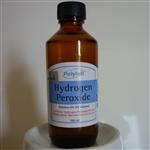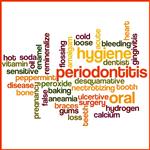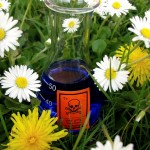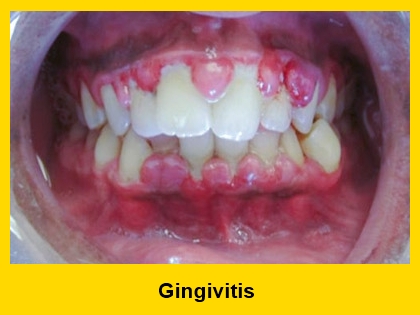 I know that many people come to this website looking for answers to these questions:
I know that many people come to this website looking for answers to these questions:
- Will a salt rinse cure gingivitis?
- What about brushing my teeth with baking soda?
- Can I rinse my mouth with Hydrogen Peroxide?
- And what about vinegar?
I answer these questions in this article.
There are many many many reports on the internet suggesting that you can use one or a combination of these elements to treat gingivitis and other mouth ailments.
Some reports suggest that you can use salt daily as a toothpaste. The same suggestions are made about baking soda. Others suggest a baking soda and hydrogen peroxide mix.
On the other hand some experts say that using salt or baking soda daily to brush your teeth is a bad idea because you risk accidentally swallowing too much salt. Too much salt can harden the arteries and cause heart disease. Okay but can it be as bad or more risky than swallowing your toxic toothpaste who’s label reads: Do Not Swallow?
Why and How is Salt or Baking Soda and Hydrogen Peroxide Good for the Mouth?
The modern use of these elements for oral hygiene is known as the Keyes Technique and it was developed in the late 70’s and early 80’s by Dr Paul H Keyes.
According to Dr Keyes all of the mechanical methods of oral hygiene (brushing, picking, flossing, rinsing, irrigation) go some way to eliminating the causes of plaque (and plaque causes gingivitis). But these methods alone are inadequate. In addition to a mechanical cleaning action, an antibacterial agent is required.
Your mouth is contaminated with bacteria. You can’t avoid this so you have to deal with it. If you don’t adequately decontaminate gingivitis will occur.
All of these Natural Ingredients Are Antibacterial
According to Dr Keyes all of the following ingredients will kill on contact what he calls motile microorganisms.1
- salt (sodium chloride)
- baking soda (sodium bicarbonate)
- glycerin2
- vinegar
- cranberry juice (unsweetened)
In addition to killing bacteria, baking soda neutralizes the acids that enable plaque to develop.
Salt is not as strong a bacterial agent as baking soda and it requires a high concentration. But salt reduces inflammation and stimulates the gum.
Another ingredient that Dr Keyes favors is hydrogen peroxide because its foaming action helps to remove the bacteria from teeth and gingivital crevices.
You should not use hydrogen peroxide if you have amalgam fillings. Hydrogen peroxide causes the mercury in amalgam fillings to leach out. This article explains the problem in more depth and includes references. And this article explains why you should get rid of any amalgam fillings that you do have!
Vinegar? Cranberry Juice? Neutrogena Soap!!? Clorox!!!??
In addition to killing bacteria vinegar and cranberry juice will help dissolve tartar (harden plaque). But cranberry juice is very acidic and should not be used every day and he recommends rinsing after using it.
Two other ingredients that Dr Keyes recommends is Neutrogena soap and a weak solution of Clorox. But there is no way I would put these two toxic elements in my mouth. Toothpaste with six toxic ingredients is bad enough.
So when you find homemade toothpaste recipes that include salt, baking soda, glycerin,3 and hydrogen peroxide you’ll know that these ideas and recommendations originated from an expert and highly trained dental professional and his conclusions are backed by his research. On the other hand some experts dispute the efficacy of the Keyes Technique.
OraMD tastes better than hydrogen peroxide and it works!
And Now for My Sister’s Experience
When my sister recently told me that she had to have a major tooth pulled and that now she had an infection and lots of pain and the dentist wouldn’t give her an antibiotic, I suggested a recipe from page 325 of the book Alternative Cures: More than 1,000 of the Most Effective Natural Home Remedies where you will find instructions for making a concentrated solution to be used in an oral irrigator to treat gingivitis. 4
My sister doesn’t have an irrigator but she made the concentrated solution as described in that book and and she also later added to the solution a few drops of the OraMD that I sent to her.
Three things happened. The pain and infection went away without the need for antibiotics.
But more than that, her gums stopped hurting. She didn’t tell me about the problem she had with her gums. But apparently she had gingivitis. She tells me her gums feel great and they look pink and healthy.
And the third thing that happened is that her teeth became very white…probably from the hydrogen peroxide.
She rinsed her mouth every day, twice a day with the concentrated solution until the major infection was gone. Now she uses the mixture occasionally to keep her teeth bright. But she uses OraMD all the time.
So if you have any doubts about whether or not you can cure gingivitis, I hope my Sister’s story encourages you to take action. It is possible to save your teeth.
Take action. Try OraMd it is simpler than the Keyes method. You can carry it in your pocket or purse. It is no more expensive than toxic toothpaste and it just works. It’s a gingivitis killer.
- Motile means mobile so a motile microorganism is one that moves about. ↩
- Evidence is emerging that glycerin prevents the natural re-enameling of teeth and should not be used as an ingredient in toothpaste. ↩
- I would use only vegetable based glycerin. ↩
- I would publish the recipe here but I am afraid I will infringe copyright. ↩





← Previous Comments
Next Comments →